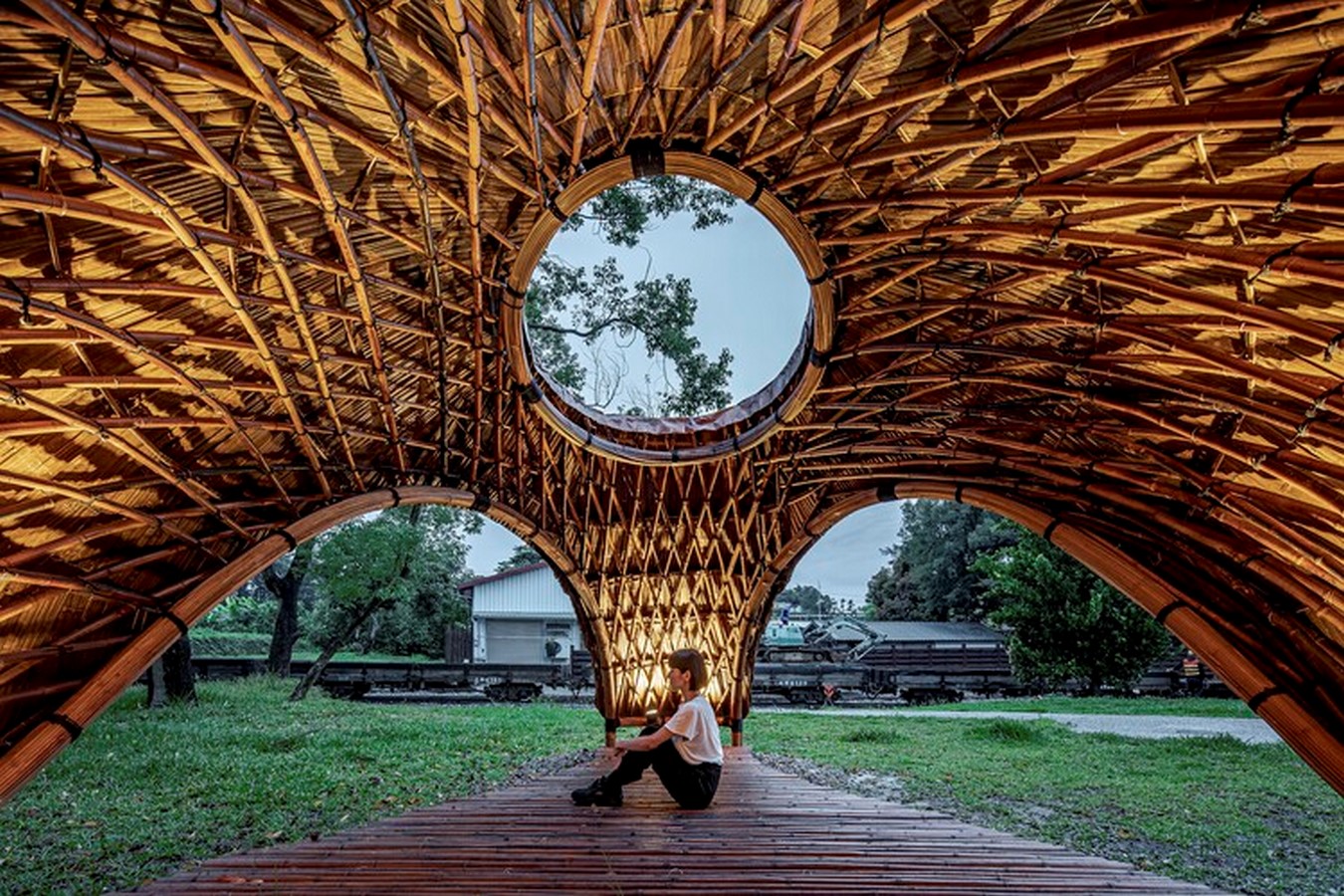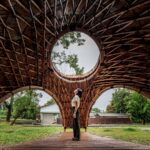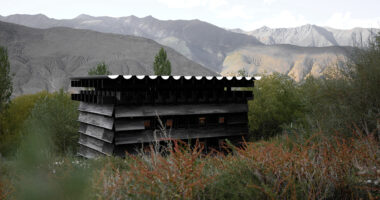A Fusion of Past and Future
Nestled at the convergence point of the forest railway in Zhuqi Station, Taiwan, the Symbiosis Pavilion stands as a testament to architectural innovation and cultural preservation. Designed by Yuan Architects, this remarkable structure is more than just a pavilion; it is a bridge connecting the rich heritage of the past with the promise of a sustainable future.

Embracing Tradition with Modernity
Constructed atop a triangular base, Symbiosis seamlessly integrates traditional bamboo materials with digital geometric shapes. Drawing inspiration from the graceful contours of bamboo forests and the utilitarian precision of industrial railways, the pavilion exudes a harmonious blend of nature and technology. This juxtaposition creates a spatial experience that celebrates the essence of local culture while embracing contemporary design principles.

A Marriage of Strength and Flexibility
Central to the design ethos of Symbiosis is its structural integrity, combining the robustness of metallic elements with the suppleness of bamboo. The pavilion’s body boasts both strength and flexibility, mirroring the resilience of bamboo stalks swaying in the wind. Crowned by a hyperboloid rooftop adorned with bamboo tiles, the structure embodies sustainable architecture at its finest, offering a glimpse into a greener future.

Symbolizing Circular Sustainability
Beyond its architectural marvels, Symbiosis serves as a symbol of circular sustainability, envisioning a future where human ingenuity coexists harmoniously with the natural world. By embracing the principles of symbiosis, the pavilion invites visitors to reflect on the interconnectedness of all living beings and the imperative of environmental stewardship. It stands as a beacon of hope, illuminating the path towards a more sustainable and symbiotic future for generations to come.


Conclusion: A Vision of Harmony
In the bustling landscape of Zhuqi Station, the Symbiosis Pavilion emerges as a beacon of harmony, uniting tradition and innovation in a dazzling display of architectural prowess. Through its seamless integration of bamboo craftsmanship and digital design, it transcends mere aesthetics to embody a profound philosophy of coexistence and balance. As visitors traverse its hallowed halls, they are reminded of humanity’s inherent connection to nature and the boundless possibilities that await when we choose to live in harmony with our environment.























